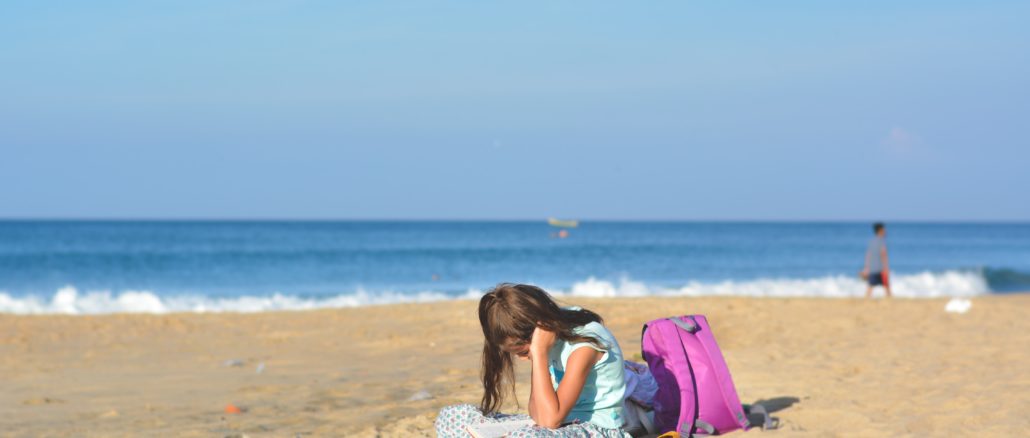
It was a pretty impressive sight. My five-year-old granddaughter slapping sunscreen all over herself before heading off to preschool.
Her idea, completely, thanks in no small part to Slip Slop Slap, one of the most successful health campaigns in Australia’s history, launched by the Cancer Council of Australia 37 years ago.
Sid the seagull, wearing board shorts, t-shirt and a hat, tap-danced his way across our TV screens for the first time in 1981 singing a catchy jingle to remind us of three easy ways of protecting against skin cancer.
So renowned is the Slip Slop Slap campaign that it got a mention in the UK earlier this year when the Children’s Burns Council praised the Australian campaign while encouraging UK parents and children to follow suit to prevent sunburn and possible Melanoma.
Over the years Slip Slop Slap has been joined by other Cancer Council health campaigns such as the SunSmart program which has been expanded to include Seek shade and Slide on sunglasses.
Because of Slip Slop Slap and SunSmart, preschools across the land are providing big bottles of sunscreen in their playgrounds while educating boys and girls as young as three on the need to cover up and/or use sun lotion throughout their lives. Lessons that millions of young Australians have carried into adulthood.
Unfortunately, too many, young and old, still treat the dangers the sun poses. too lightly.
Queensland is still regarded as the skin cancer capital of the world but campaigns like Slip Slop Slap, SunSmart and others have over the years helped reduce the number of people diagnosed with Melanomas.
Cancer Council Queensland CEO Chris McMillan said while it was promising that the melanoma incidence rate for young people had declined, the state’s high sunburn rates were of considerable concern.
The Health of Queenslanders 2018 report, released in November, showed that 54 per cent of adults and 46 per cent of children were sunburnt in the previous 12 months.
“Sunburn and the majority of skin cancers are preventable through taking care in the sun – it is vital for all Queenslanders to take sun safety more seriously,” Ms McMillan said.
The Health of Queensland report said sun protection behaviours were effective in limiting exposure to ultraviolet radiation that leads to 6% of all cancers. Only about 1 in 2 children and 1 in 5 adults used daily sun protection, and 1 in 2 (children and adults) were sunburnt in the previous 12 months. Melanoma is the deadliest form of skin cancer and is the second most common cancer in women aged 20 to 29, a recent US report said.
If not caught in its earliest stage, melanoma can easily spread to other parts of the body. Melanoma can be found anywhere on the body, both on sun-exposed areas and shielded areas of the skin. It’s caused by sunburn and can be genetic.
While older adults are at higher risk of developing skin cancer, the incidence of skin cancer is rapidly rising in young adults aged 20 to 29. Experts attribute this to excessive tanning and the increased use of tanning beds.
New genetic research from the American Association for Cancer Research suggests that dark-haired people who do not sunburn easily may be at risk for potentially deadly skin cancer, too. The research suggests that even people who have not been severely harmed by the sun may still be at increased risk of melanoma.
Humans are not alone in being threatened in the battle against skin cancer.
The Queensland Government has warned holiday-goers planning to swim at the Great Barrier Reef that their choice of sunscreen could inadvertently be damaging the coral reef.
The advice came just days after Hawaii passed a bill to ban the sale of sunscreen containing certain chemicals which have been found to cause coral bleaching when the sun cream washes off the skin in the ocean.
These include common ingredients that feature in popular 50+ sunscreen products found on Australian pharmacy and supermarket shelves.
Such as Banana Boat Everyday, Coles Everyday Sunscreen, Coles Kids Sunscreen, Cetaphil Suntivity Kids, Ombra Ultra Sport and Kids and Neutrogena Ultra Sheer.
The chemicals – oxybenzone and octinoxate – are so commonly used that if there were to be a similar ban on these ingredients in Australia, it would immediately cull almost 40 per cent of sunscreens currently on the market, according to a sunscreen expert.
About 14,000 tonnes of sunscreen is estimated to be deposited in oceans every year, with the greatest damage found in tourist hotspots, including reefs popular for snorkelling.
A Queensland Department of Environment and Science spokeswoman said international research has shown many sunscreens contain chemicals that can be “harmful, or even fatal” to coral.
“The Great Barrier Reef Marine Park Authority advises visitors to wear environmentally friendly benzene-free sunscreen,” she said.
“This can include sunscreens containing titanium oxide and zinc oxide, as these chemicals are not as harmful to corals as oxybenzone, octinoxate and butylparaben.
“… overseas studies have shown that very low concentrations of sunscreen (10 microlitres/litre) can result in complete bleaching of hard corals within 96 hours.”
Professor Sanchia Aranda, CEO of Cancer Council Australia, said that those who do not wish to use sunscreen with these ingredients are safe to use Cancer Council-branded products or other alternatives.
“It is possible for sunscreens to be effective without these two ingredients if alternatives are used,” she said.
“We don’t use oxybenzone in any of our sunscreen products and haven’t for some time.
“Octinoxate is currently used in our Ultra Lip Balm, but this product has recently been discontinued. It is also currently in our Classic Zinc sunscreen, which will be reformulated for next summer.”
Great Barrier Reef Foundation managing director Anna Marsden said it is supportive of “any measures to reduce the stressors affecting our coral reefs”.
“But there is no single solution.”
SheSociety is a site for the women of Australia to share our stories, our experiences, shared learnings and opportunities to connect.

Leave a Reply